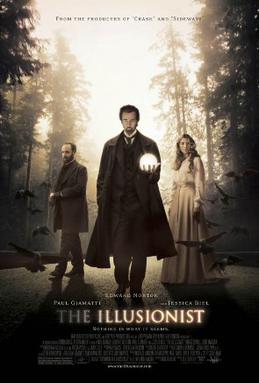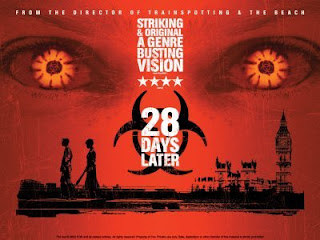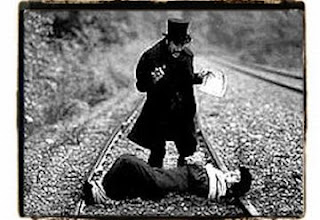The Phoenix (Gunnersbury) affair
The Head Teacher of the Phoenix (Gunnersbury) Catholic High School is addicted to gambling and he has run up some debts. Jimmy Fox gets his hacker friends, offers them large amounts of money and gets them to break into the school finance network and make large amounts of money disappear, while trying to put the blame on the Head teacher who has a motive for stealing the money as he is in debt. He is to become the scapegoat for the school finances fraud that is being organised by a Jimmy Fox who tries to blackmail him to agree to the sale of the school park grounds to the White Star Corporation. They are very good grounds in central London and are meant to become grounds for a new shopping centre. Jimmy Fox is a relatively popular student in the school. (School life plays a minor part in the movie.) He and his dad Michael Fox have been bribed/blackmailed into doing this. Michael Fox is a lowly manager in the White Star company and he has been threatened with being sacked unless he manages to somehow make the head teacher agree to the sale. He is relatively old at the age of 48; he brought up his son on his own when his wife died a week after the birth of Jimmy in a car accident. (No other mention of that in the movie.) He is worried about providing a good life for his son and as such he agrees to the blackmail made by White Star. He believes that he does everything for the good of his son. White Star proposes a promotion to a high level position for Michael as well as a managerial job for Jimmy (with good prospects). They provide money for the payment to Jimmy’s hackers. Before the movie started, the corporation has offered money officially for the grounds to be bought were refused and they already managed to bribe the board members but the head teacher is the last remaining opposing force. Over the course of the movie he emerges as a good person as he gives up gambling and gets a loan and tries to pay of his debts, as such he emerges as a good person at the end of the movie. He is also the main force behind the keeping of the Park grounds as he does it for the students who get a lot of use out of them. He is killed at the end of the movie by Michael as the hacking scheme failed and his personal attempt at bribing the head teacher fails. (Details to be worked out – insignificant in the actual coursework movie.)
Possible endings
1. A shot of the machines driving onto the park fields, and as such signifying the success of the company. Michael is sitting in a new office that is clearly for someone of importance. Cut to him coming home and being happy but he notices a certain amount of his son’s stuff missing and he finds a letter that says he is disgusted with his father and he is leaving him. Michael will probably never hear from Jimmy again. Irony as he originally did everything including the murder thinking it would be for his son. There is a huge sense of hopelessness as there is no chance of ever getting evidence against White Star, the grounds being destroyed, and Michael’s involvement not suspected b anyone, he gets away with it. But there is some sense of a balance as Michael loses his son – probably forever.
2. Michael Fox is caught by a detective character that reappears throughout the movie. (Character to be developed and included in the movie, slowly getting the whole picture of the affair but finding very little evidence besides getting the father to be put in prison.) The son organises a demonstration and the final scene of the movie is a huge protest of students in front of the building machines, stopping them from getting through. Board members being initially with the workers move to the students after they’re told that White Star probably caused the Head teachers death. Considering that they were previously bribed they decide to go over to the students side. However there is still a sense of hopelessness as there is no evidence that would allow for White Star to be prosecuted.


 The only titles that appear in the movie is “28 days later…” in the bottom right corner and this clearly sets up a time after an important event that happened 28 days before it. The opening sequence that follows is completely uninterrupted by titles which creates a setting that Is considerably more unnerving than if titles that were clearly out of place, where appearing all over the screen and thus stopping the viewer from fully immersing himself with the thriller movie that was unravelling before his eyes.
The only titles that appear in the movie is “28 days later…” in the bottom right corner and this clearly sets up a time after an important event that happened 28 days before it. The opening sequence that follows is completely uninterrupted by titles which creates a setting that Is considerably more unnerving than if titles that were clearly out of place, where appearing all over the screen and thus stopping the viewer from fully immersing himself with the thriller movie that was unravelling before his eyes.




 Firstly the Production titles appear at the beginning as on all/most films would have. The production is Metro Goldwyn Mayer with their logo, trade mark and website. At this moment during this title there is a synchronous sound effect of a lion roaring. Then there is a small introduction sequence with James Bond which is at the beginning of every James Bond movie it is also known as the ‘Gun Barrel Signature’. The reason why this is featured is because it shows links between films and as James Bind is part of a series of films, it links them together and the audience also knows what is expected in the film. There is a score that plays over this sequence which is like a spy, action, thriller type of music.
Firstly the Production titles appear at the beginning as on all/most films would have. The production is Metro Goldwyn Mayer with their logo, trade mark and website. At this moment during this title there is a synchronous sound effect of a lion roaring. Then there is a small introduction sequence with James Bond which is at the beginning of every James Bond movie it is also known as the ‘Gun Barrel Signature’. The reason why this is featured is because it shows links between films and as James Bind is part of a series of films, it links them together and the audience also knows what is expected in the film. There is a score that plays over this sequence which is like a spy, action, thriller type of music. Then there is an opening sequence which is uninterrupted by titles. The sequence begins with a character following. During this sequence there is not much dialogue, only until the end we hear someone speaking. Until then there are only synchronous sound effects of a gun being shot and footsteps of the two characters. However in between we can also hear a non diegectic, score being played in the background. It is slow and low which makes it thirlling for the audience because hardly any sounds can be heard so the audience would tend to listen very carefully. Therefore this makes the audience focused right fom the beginning until the end. Gradually the score becomes faster which creates tension and anticipation until the character is killed. Suddenly there are floodlights and the person who is dead turns out to be someone else and all of this was just practice.
Then there is an opening sequence which is uninterrupted by titles. The sequence begins with a character following. During this sequence there is not much dialogue, only until the end we hear someone speaking. Until then there are only synchronous sound effects of a gun being shot and footsteps of the two characters. However in between we can also hear a non diegectic, score being played in the background. It is slow and low which makes it thirlling for the audience because hardly any sounds can be heard so the audience would tend to listen very carefully. Therefore this makes the audience focused right fom the beginning until the end. Gradually the score becomes faster which creates tension and anticipation until the character is killed. Suddenly there are floodlights and the person who is dead turns out to be someone else and all of this was just practice.







 The newest and currently the most popular type of thriller are the action ones of which a perfect example is ‘The Bourne’ series. Those don’t concentrate so much on great character development and an unbelievably great story but rather action sequences that are often done on a huge scale, fight scenes that often incorporate elements of acrobatics in order to enhance them and finally lavish locations that are spread all around the world.
The newest and currently the most popular type of thriller are the action ones of which a perfect example is ‘The Bourne’ series. Those don’t concentrate so much on great character development and an unbelievably great story but rather action sequences that are often done on a huge scale, fight scenes that often incorporate elements of acrobatics in order to enhance them and finally lavish locations that are spread all around the world.


